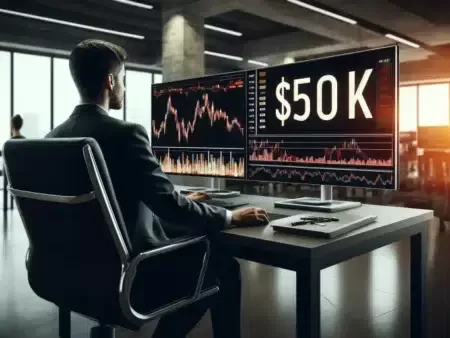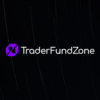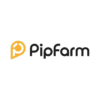Introduction
In a fast-paced world full of opportunities, Forex trading has emerged as one of the most exciting ways to make a profit. With markets open 24 hours a day and global accessibility, Forex trading offers an arena where individuals, from beginners to seasoned traders, can test their ingenuity and strategies for profit.
Forex, which stands for foreign exchange, is a currency exchange market that operates globally. It is the largest financial market in the world, with daily trading volumes that reach trillions of dollars. Its main attractions are high liquidity, reliable volatility, and the possibility of large profits. However, as with any investment, Forex trading also comes with its risks.
This article is designed to guide you through the maze of Forex trading, with a focus on how to profit Forex trading fast. We’ll cover everything from Forex basics to advanced strategies, tips for identifying opportunities, and how to avoid common mistakes that beginner traders often make. The goal is simple: provide you with the necessary knowledge and tools to start your Forex trading journey on the right foot.
With this article, you’ll get the insight you need to take your first steps in the world of Forex trading. Whether you’re a beginner looking to understand the basics or an experienced trader looking to perfect your strategy, this guide will help you understand how to make the most of this market. Let’s start the journey to Forex trading success!
What is Forex Trading?
Forex trading, or foreign currency trading, is the process of buying and selling currencies on the global market. It is not just about exchanging money when you are traveling abroad but is a serious and strategic form of investment. In Forex, traders seek to profit from exchange rate movements between two currencies. For example, you might buy Euros with US Dollars, hoping that the value of the Euro will rise relative to the US Dollar so that you can resell it at a higher price.
The Forex market is a decentralized market that operates through a global electronic network of banks, financial institutions, and individual traders. It is open 24 hours a day, five days a week, with major trading centers located in London, New York, Tokyo, Zurich, Frankfurt, Hong Kong, Singapore, Paris, and Sydney. This allows traders from all over the world to trade currencies at times of their choosing.
Preparation Before Trading
Before starting Forex trading, the first and most important step is to choose the right broker. Forex brokers are the intermediaries between you and the Forex market. They provide access to a trading platform, where you can buy and sell foreign currencies. When choosing a broker, pay attention to factors such as reliability, transaction costs, spreads, trading platforms offered, and customer support. Also, ensure that the broker is regulated by a trusted financial authority.
The Importance of a Demo Account for Practice
Before jumping into trading with real money, it is highly recommended to practice with a demo account. A demo account allows you to trade in a real market environment without the risk of losing money. This is a golden opportunity to hone your trading skills, test strategies, and understand the dynamics of the Forex market. Use a demo account to become comfortable with trading and make mistakes without financial consequences.
Set Trading Goals and Plan
Trading without clear goals and a plan is like sailing without a compass. Setting realistic trading goals and creating a trading plan are key to long-term success. Your goals should be specific, measurable, achievable, relevant and time-bound (SMART). Your trading plan should include rules on when to enter or exit trades, how much you will risk per trade, and how you will manage your trading funds.
Forex Trading Strategies
Technical Analysis vs Fundamental Analysis
The two main tools used by Forex traders in making trading decisions are technical analysis and fundamental analysis.
- Technical Analysis: This involves observing chart patterns, technical indicators, and historical price action to predict future price movements. Traders using technical analysis look for patterns such as support and resistance, trendlines, and various chart patterns such as head and shoulders or triangles.
- Fundamental Analysis: On the other hand, fundamental analysis focuses on economic and political factors that might affect the value of a currency. This includes economic indicators such as GDP, inflation rates, and central bank monetary policies. Fundamental traders try to understand how this news will affect the demand and supply of a currency.
Short-term vs Long-term Trading Strategies
Your choice of trading strategy can be short-term (such as day trading or scalping) or long-term (such as position trading).
- Day Trading: This involves opening and closing positions within a single trading day, never allowing positions to remain open overnight. Day traders usually rely on intense technical analysis.
- Position Trading: On the other hand, position trading is about holding positions for longer periods, often based on fundamental analysis. It requires patience and a good understanding of macroeconomic factors.
Risk Management
Risk management is a key aspect of successful Forex trading. This includes:
- Setting a Stop-Loss: This is an order to close a trading position when it reaches a certain loss level, to limit your losses.
- Risk/Reward Ratio: Understanding the risk-to-reward ratio and only entering trades where the potential reward exceeds the risk.
- Diversification: Don’t put all your capital into one currency or one trade.
Tips and Tricks for How to Profit Forex Trading Fast
To profit quickly in Forex, you need to be able to identify profitable trading opportunities quickly. This includes understanding when the market is most volatile, as volatility often creates profit opportunities. For example, important economic announcements such as employment reports or interest rate decisions often cause large movements in the Forex market.
When is the Best Time to Trade?
The ideal trading time depends on the currency pair you’re trading. The Forex market is divided into three main sections: Asian, European, and North American. Each session has its characteristics. For example, the European session is usually the most active and volatile, especially when the London session overlaps with the New York session.
Wise Use of Leverage
Leverage is a powerful tool in Forex that allows you to control large positions with relatively small capital. However, leverage also increases risk. Use leverage wisely, never risk more than you can afford to lose. Understanding how to use leverage effectively is key to optimizing profit potential while minimizing risk.
Common Mistakes to Avoid
Forex trading can be very lucrative, but it is also full of pitfalls. Here are some common mistakes to avoid:
- Overtrading: Opening too many positions or trading with too large lot sizes can quickly deplete your trading capital.
- Emotions in Trading: Trading decisions should be based on analysis and strategy, not emotions like fear or greed.
- Avoiding Forex Scams and Fraud: Always do your research before investing and work with a trusted and regulated broker.
Importance of Consistency and Discipline
Consistency and discipline are the foundation of any successful Forex trader. Don’t expect to make huge profits in a short period; focus on making smart and consistent trading decisions.
Conclusion
Keep in mind that while there is potential for quick profits, Forex trading also involves significant risk. Continuous education and practice are key to developing and maintaining success in trading. There is always something new to learn in this dynamic market. Don’t stop learning and keep honing your skills.
Success in Forex trading does not come overnight. It requires discipline, patience, and consistent application of strategies. Don’t be tempted by the promise of quick profits without recognizing the risk and hard work required. Focus on building a balanced approach and don’t forget about the importance of risk management.
Now that you know how to profit from forex trading fast, the next step is to take action. Consider starting with a demo account, if you haven’t already, to test your strategies risk-free. Get involved in the trading community, seek out additional sources of information, and consider getting a mentor or joining a trading course to deepen your understanding.
Remember that Forex trading is a journey, not a destination. Every trader has their unique path. With the information we’ve shared here, you’ve gained a solid foundation. Use this knowledge as a starting point for your profitable and insightful Forex trading journey.








